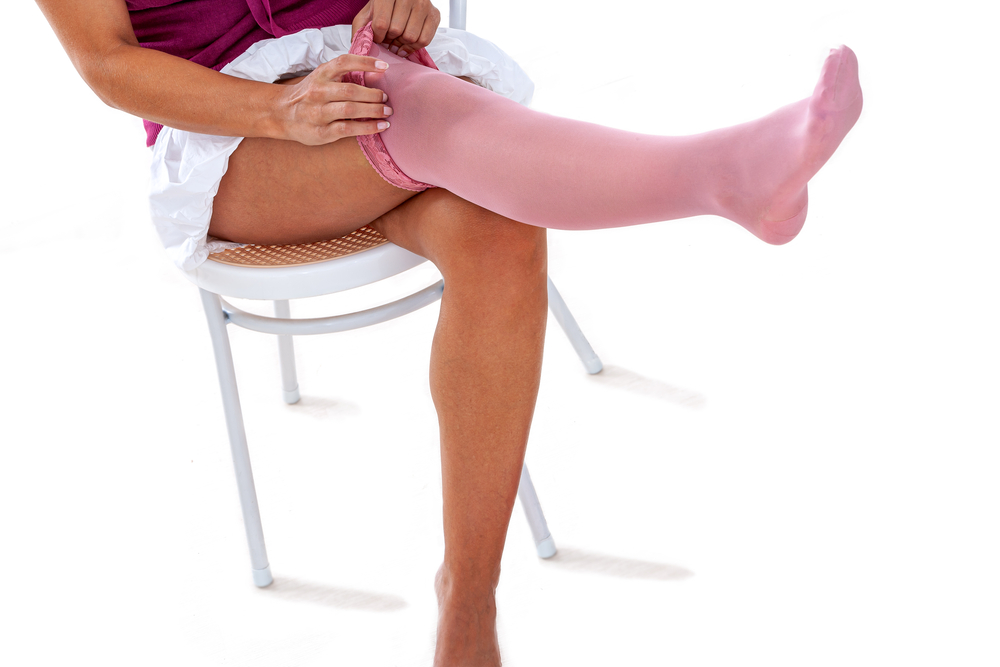Lymphedema: Causes, Symptoms, and How Compression Can Help
 Lymphedema describes a condition where a person’s arm or leg experiences significant swelling due to lymph node damage or removal. This swelling is often severe enough to cause pain or discomfort and limit your range of motion in the affected limb, and can even put you at risk of developing other complications. Here’s what you need to know about lymphedema, including its causes, symptoms, and viable treatments—including the use of compression garments.
Lymphedema describes a condition where a person’s arm or leg experiences significant swelling due to lymph node damage or removal. This swelling is often severe enough to cause pain or discomfort and limit your range of motion in the affected limb, and can even put you at risk of developing other complications. Here’s what you need to know about lymphedema, including its causes, symptoms, and viable treatments—including the use of compression garments.
Causes of Lymphedema
As we mentioned above, lymphedema is typically caused by damage to or removal of lymph nodes. Most often, this is seen in cancer patients undergoing chemotherapy; chemo can cause significant damage to the lymph nodes, result in what is known as secondary lymphedema. It can also occur if the cancerous cells are actively blocking lymphatic vessels or the flow of lymph fluid, or if surgery to remove cancerous cells (especially in breast cancer patients) damages or removes nearby lymph nodes.
In addition to its connection to cancer patients, lymphedema may also be caused by some rare genetic conditions. When lymphedema occurs without damage or removal of a lymph node as the root cause, it is known as primary lymphedema. This type of lymphedema is most often seen in patients suffering the following inherited diseases:
- Milroy’s disease – An illness that causes abnormal lymph node formation in infancy
- Meige’s disease – An illness that causes primary lymphedema during puberty or pregnancy
- Late-onset lymphedema – A very rare condition in which lymphedema begins after the age of 35, with no clear cause
However, whether it’s primary or secondary lymphedema, the key issue remains the same: Your lymphatic system is no longer able to do its job as it should. Your lymphatic system is responsible for circulating lymph fluid throughout your body. This fluid collects viruses, bacteria, and waste products, helping to filter them out of the body. If your lymph vessels can’t properly drain the fluid from a certain part of your body, that body part will swell, resulting in lymphedema.
Symptoms of Lymphedema
As you can probably guess based on the descriptions given above, the clearest sign of lymphedema is abnormal swelling of a limb, typically an arm or a leg. Though not common, it is possible for lymphedema to occur in more than one limb, depending on which lymph nodes are affected. As a result of this swelling, you’ll also likely experience a feeling of heaviness or tightness in the affected limb, and some possible pain or discomfort. Your range of motion in the limb will also likely be restricted. In some cases, you may also notice hardening or thickening of the skin, also known as fibrosis.
It’s important to be aware that lymphedema doesn’t always manifest immediately after lymph nodes are damaged or removed. In some cases, it won’t develop for months or even years after the accident or injury that damaged your lymph nodes. Symptoms can range from mild to severe, so if you’ve had surgery or cancer treatment at any time in the past few years, you should be vigilant and pay close attention to any unexplained changes in the way your limbs feel or the way they move. Untreated lymphedema can cause serious bacterial infections, so you should not ignore these kinds of changes.
Treating Lymphedema
Unfortunately, there is no long-term cure for lymphedema. Once your lymphatic system has been damaged in this way, it’s not possible to undo it. However, proper care can minimize the symptoms of lymphedema can reduce your symptoms and improve your quality of life, while also reducing your odds of developing additional complications.
All treatments for lymphedema are focused on helping to promote fluid circulation in the swollen limb. Gently exercising the impacted limb, under your doctor’s or therapist’s instructions, can help improve the flow of lymphatic fluid in the limb. Appropriate massage techniques, administered by a professional, can also help to drain lymphatic fluid away from the affect arm or leg. Pneumatic compression, which inflates and deflates intermittently, can also encourage fluid circulation.
However, by far the most common treatment for lymphedema is the use of compression garments. These tight-fitting sleeves and stockings apply gentle, constant pressure to the swollen arm or leg to encourage the flow of lymphatic fluids. It’s extremely important that patients are using the correct level of compression, rather than relying on any tight-fitting garment. Consult with your doctor to determine the right compression level for your needs. Then, come to Medical Xpress, and we’ll help you find the compression socks, stockings, or sleeves you need to manage your lymphedema and improve your quality of life.